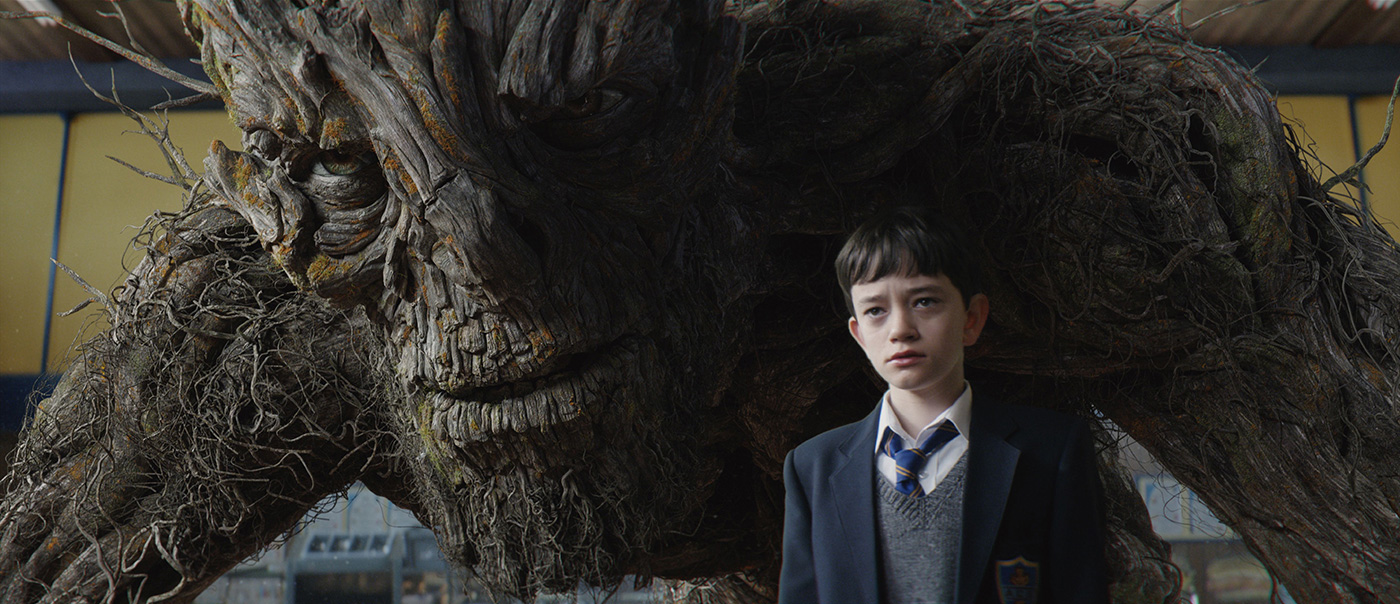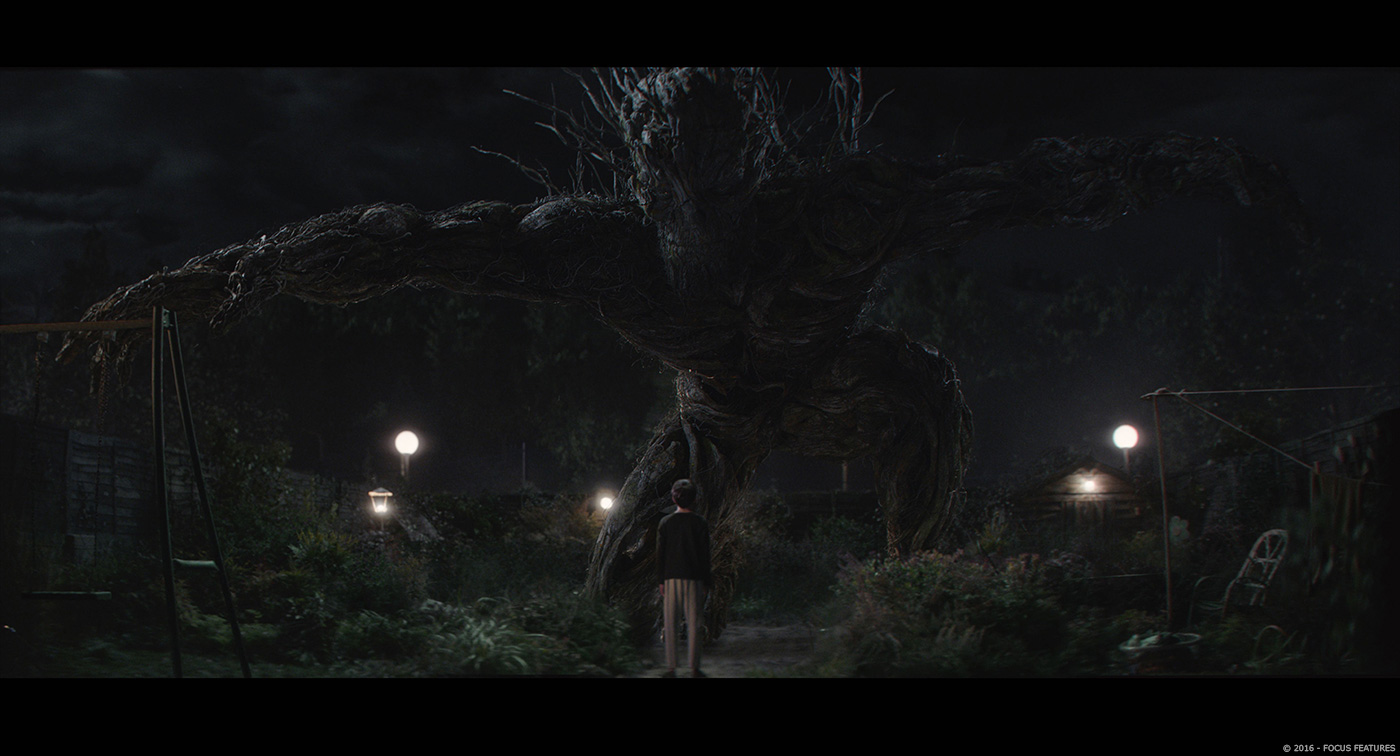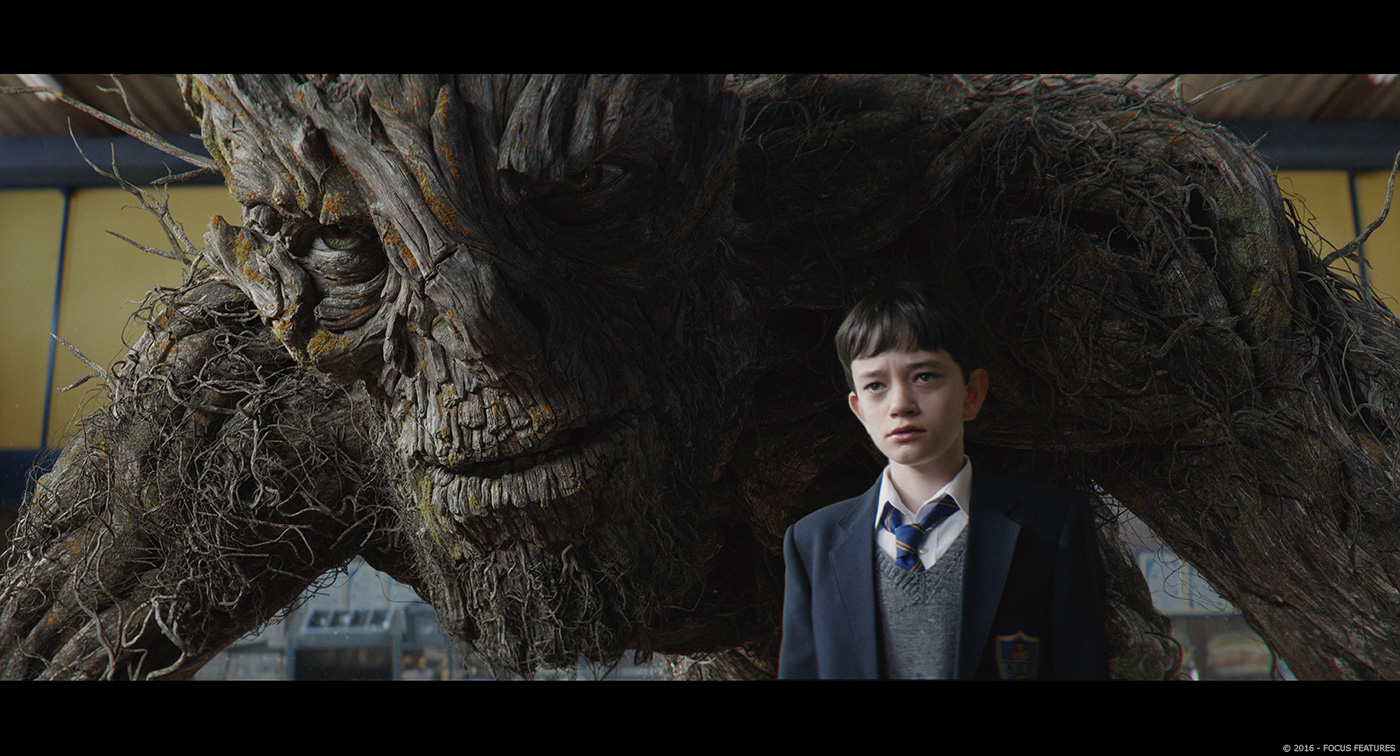In 2014, Ferran Domenech told us about the animation work of MPC on GODZILLA. He then worked on NIGHT AT THE MUSEUM: SECRET OF THE TOMB, THE LEGEND OF TARZAN and FANTASTIC BEASTS AND WHERE TO FIND THEM. He talks to us today about his work as a VFX Supervisor.
How did you and MPC got involved on this show?
I was offered the opportunity to lead the team at MPC Montreal. I traveled to MPC London to meet with the client and get involved in the early stages of production.
How was the collaboration with director J.A. Bayona and VFX Supervisor Felix Berges?
The collaboration was very interesting and rewarding. Bayona has a great eye and sensibility for the characters. Unlike most shows, he was on every review along with Felix. Twice a week we would get direct feedback from him, very important on a show with such emphasis on acting.
What was their approaches and expectations about the visual effects?
J.A Bayona wanted the tree monster in our scenes to look photoreal and his acting to be as subtle as Conor’s. Visual effects can overshadow the drama of a scene, so it was very important to him that the monster would complement the scenes with the actors and not take the attention away from the story.
That’s was your first project as VFX Supervisor. What was your feeling about it?
I couldn’t have wished for a better project to make the move from animation supervisor to visual effects supervisor. The dialogue and animation heavy scenes played well to my strengths and the relationship with Bayona and Felix was a true collaboration. The film itself is great and tells a very moving story with a beautiful style and flair to it. It’s amazing when the result is so well-rounded from all angles.
What are the sequences made by MPC?
MPC was approached to do all of the close up talking scenes on the film as well as transformations and actions scenes with the monster. We were asked to build the monster itself and we shared the finished asset with the other vendors, who used it in turn for the fantasy stories and the wide shots.
For the close up scenes we had to build a fully expressive facial rig that would allow for the lipsync and the emotion to work, while keeping the « made of wood » properties of the creature.
How did you organize the work at MPC?
MPC London did the asset work for the monster, including, concept art, modeling, texturing, and rigging. MPC Bangalore took care of the match move, but MPC Montreal was the main facility for the show and did the rest of the work, including Layout, Animation, lighting, rendering and final Comp.
How did you work with the art department for the design of the Monster?
We were given original artwork for the client and used scans from the set build of the head of the monster, then we took over the rest of the creation of the creature, the body and the tweaking of the facial design to allow for articulation and lip sync.
Can you explain in detail about his creation?
The monster was made of hundreds of different pieces that would interlock and slide against each other, so it was technically heavier to manipulate and harder to create than the average rig we use. We had loads of images from set of the practical monster so we used those as a guide to match for texturing. The body was made of groups of varied types of wood with different qualities that roughly matched human anatomy, harder pieces as a bark outer layer like a shell or skin, with inner muscles underneath, and softer vines as nerves and tendons with a greener and smoother look to them. They would slide when the monster moved pulling the harder pieces like a muscular system of sorts.
Can you tell us more about his rigging?
We had to be true to the material, in this case wood, so the rigging department was tasked with creating a hard surface that would at the same time allowed for the range of motion needed for the scenes. For this the face was made of sliding pieces, like shingles on a rooftop that would not stretch, but instead just slide. It was heavy and challenging to rig but gave a more realistic finish to the face.
Did you received specific indications and references for his animation?
We had talks with J.A. Bayona where he explained his vision for the monster as an ancient and strong being. Like Poseidon from greek mythology, the monster is old but strong, he has power but sometimes as he moves you get the hints of age in his performance, like placing a hand on his knee when standing up. We also had motion capture sessions with Liam Neeson for reference. He wore a helmet camera for the lipsync and facial expressions and the captured sessions were recorded from multiple angles as he acted the scenes against a miniature model of the house and Conor. Those sessions were a great guide for our animation team.
Can you tell us more about his animation and especially the facial animation?
In the end we did not use the motion capture data for any of the final shots. We took into consideration the proportions and size of the monster, so it was better for us to just match the references when needed, and bring our own keyframe animation to the final shot. We had to reach the performance the director wanted so we found that it was more effective to give the animators the freedom to keyframe animate based on references. It gave us the performance the director wanted, and faster.
For the facial animation we used the helmet camera video reference very often. It gave us great lipsync reference, and we used it to match the eye direction and eyebrow expressions. Since the monster has a stylized face we created a library of pictures of Liam’s range of expressions and a set of matching Monster expressions for each, this helped the animation team translate his performance faster.
How did you put the personality of Liam Neeson into the Monster?
With the help of the animation department, led by Marco Foglia, we did a lot of research and also had great video reference from Liam and we matched it most of the time as per Bayonas direction. Some scenes required tweaks, but we always had relevant references from multiple takes and a library of expressions we could draw from to maintain the feel Liam brought to the Monster.
The Monster have inner fire. Can you explain in detail about its creation?
We had a separate version of the monster we called the « angry monster”, this version of the rig would render as a glowing monster and had bigger musculature that could be animated to expand and branches that were rigged to grow if animated. For scenes where the monster was angry we rendered two passes with and without the inner fire glow and the comp department would combine them to create a shimmering and changing effect.
Can you tell us more about the various environments creation?
We created the rooftop of Connor’s house and his neighborhood, then shared this with Felix’s team. We also made close up pieces of land that could be destroyed for the final scene on the cemetery nightmare, so the monster could push and crush in anger.
Which one was the most complicated to created and why?
The most complicated was probably the transformation work. MPC was tasked with all the transformations of the monster from Yew tree into humanoid monster. For this we created a fully CG dynamic yew tree and made a variation that could break into pieces, so the monster could rip itself out from the inside. This was technically challenging both in choreography and build. The animation had to be precise to work with the transformation and many layers of FX bark breaking, dust and leaves had to be added to finish the look. In the end the shots are quite striking and worth the effort.
How did you manage his presence on-set and the interactions with the actors and the set?
The size and placement on set was usually well established by the practical monster. To get the dialogue lipsync and the range of expressions required for the film the decision was made to replace the practical puppet with our cg monster. The benefit of having the practical monster can’t be underestimated however, since it gave space cues to the actors to deliver better performances and served as a great reference for us to match for size and lighting.
There are many destructions in the cemetery and the school. How did you used Kali for this aspect?
We did use Kali for destruction as well as rigid body dynamics and cloth simulation for the tables on the cafeteria and the rocks in the cemetery.
How did you handle so many elements in the animation and render process?
We had a very dedicated animation, tech anim and lighting team, our animation puppet was reasonably fast and the facial rig was heavy but still responsive. The render side of the monster was more challenging, the amount of pieces needed to create his intricate body shapes made him heavier than the average rig but we still managed to get it through the farm. From a technical point of view, the monster required a dynamic technical animation pass for most shots. Since his smaller branches had to move in the wind, this added an extra layer of complexity to most shots. All in all, the monster was indeed a bit of a monster to handle!
What was the main challenge on the show and how did you achieve it?
The main challenge was the nuance performance of the monster and its photoreal look. We achieved it with the help of great group of passionate artists in all of our departments. It’s sounds like an old saying but it is very true. Visual Effects require the hard work of a great number of very dedicated perfectionists to do this kind of work. I count myself lucky to have worked with so many of them on this project.
What do you keep from this experience?
Working so closely with a great director is always memorable, and the team we had at MPC Montreal was really great. Working alongside Stephanie Pocklington, Patrick Tasse, Marco Foglia, Manuel Mantero made this one of the most enjoyable shows of my career.
How long have you worked on this film?
For about a year.
How many shots have you done?
About 180 shots.
What was the size of your team?
Over 200 people.
What is your next project?
I recently finished FANTASTIC BEASTS AND WHERE TO FIND THEM, and I am now working on ALIEN COVENANT.
A big thanks for your time.
// WANT TO KNOW MORE?
– MPC: Dedicated page about A MONSTER CALLS on MPC website.
© Vincent Frei – The Art of VFX – 2017

































